Roofing for Listed & Protected Buildings is essential to preserving your property’s value, safety, and character. Across London and the Home Counties, even minor leaks or failing insulation can mean escalating repair costs, damp, or energy loss. Our team provides specialist roofing for listed, protected, and conservation properties, delivering compliance, care, and reliable long-term performance.
With decades of experience, Which Trusted Trader and CITB accreditations, and materials from suppliers like Welsh Slate, ALM Lead, and Kemper, you can trust every project is expertly delivered for heritage, legal, and technical peace of mind.
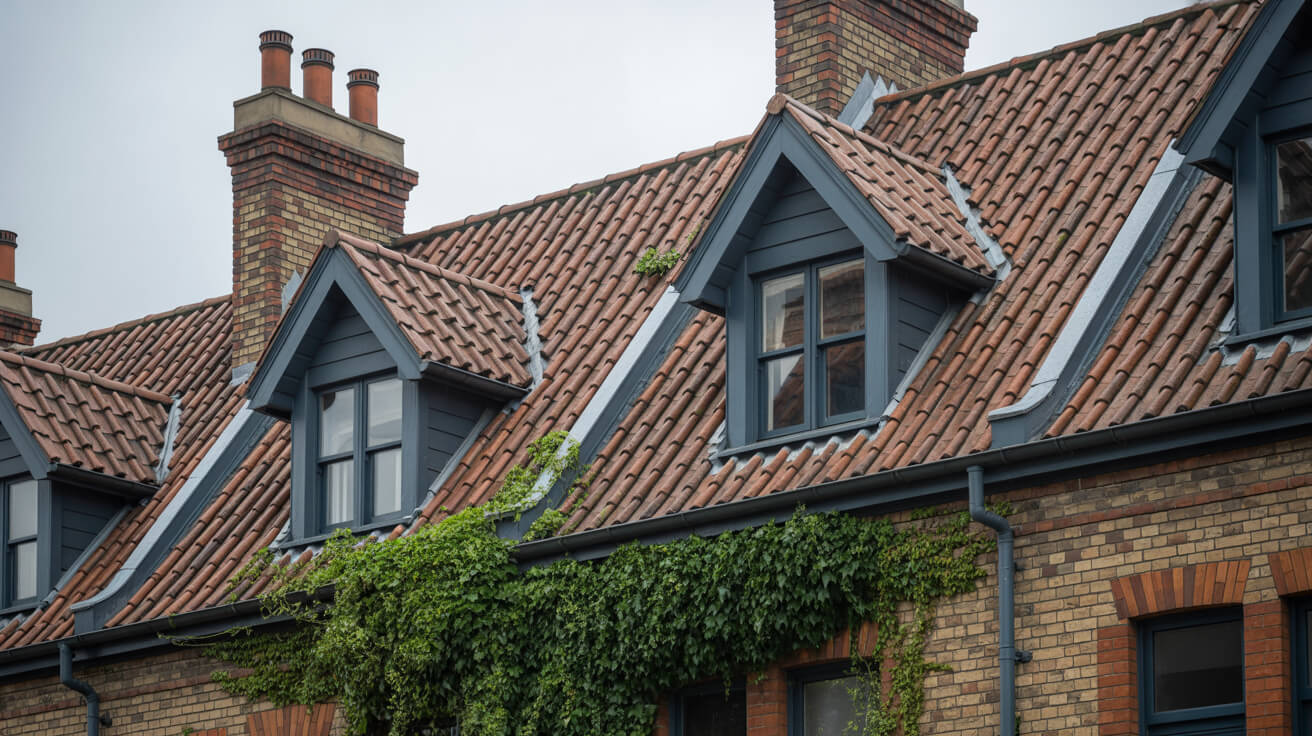
Neglecting roofing issues leads to leaks, damp, increased energy loss, and insidious structural deterioration. Delaying repairs always increases costs, risks, and the potential for avoidable disruption to your property.
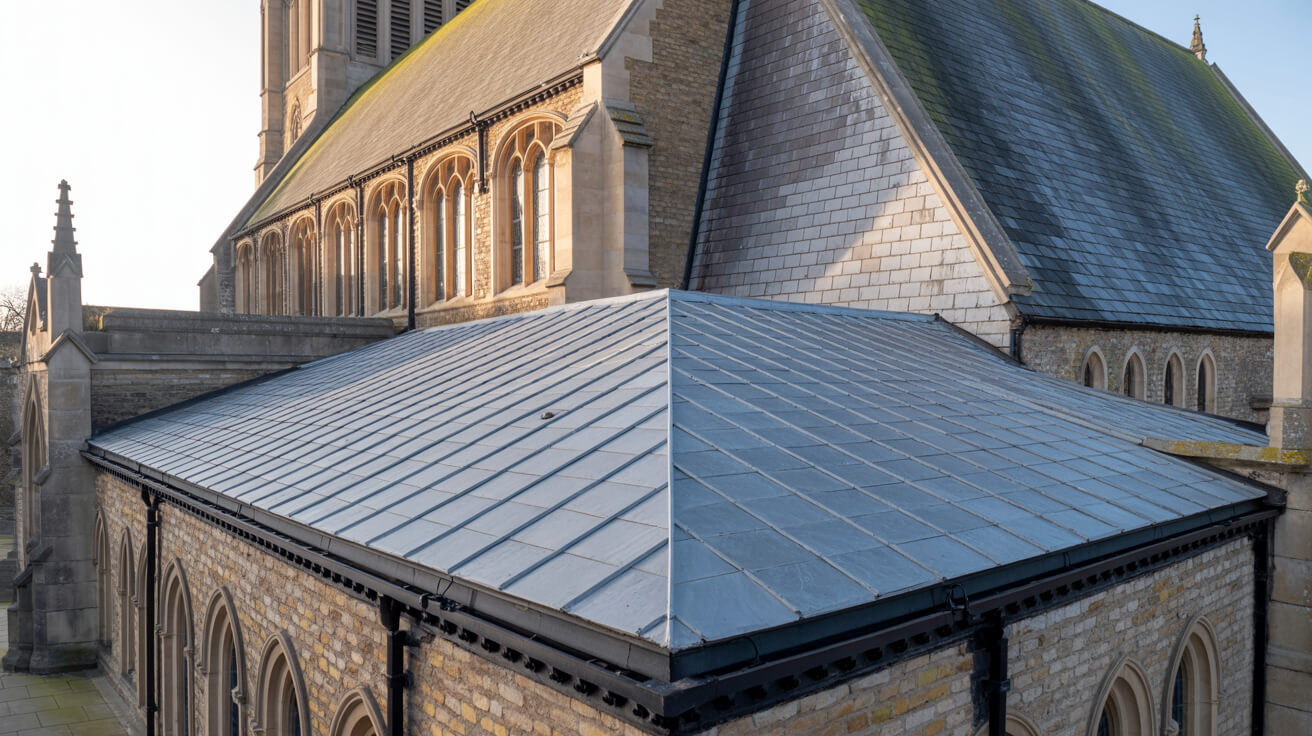
A professional Roofing for Listed & Protected Buildings service provides robust weather protection, improved insulation, and full compliance with building regulations. Whether you’re a homeowner seeking security, a landlord aiming for asset value, or a business prioritising safety and efficiency, proactive roofing care delivers peace of mind, long-term financial savings, and regulatory certainty.
Roofing for Listed & Protected Buildings covers installations, repairs, upgrades, and restoration for homes, businesses, and heritage sites. Every solution is built for long-term performance, regulatory compliance, and visual harmony, using superior materials from trusted suppliers. We tailor each project for your property type, ensuring maximum durability, safety, and care with every step.








Every Roofing for Listed & Protected Buildings project is adapted to property type, roof structure, and environmental demands. Tailoring ensures compliance with regulations, minimises disruption, and maximises long-term value. From homes and businesses to industrial sites and listed heritage buildings, our flexible approach guarantees roofing solutions that meet unique needs while delivering safety, efficiency, and reliability.
Homes, extensions, and listed buildings.
Offices, retail, schools, and hospitality.
Warehouses, factories, and logistics sites.
Every Roofing for Listed & Protected Buildings project follows proven steps with quality materials. Whether a new installation, upgrade, or repair, each layer adds durability, safety, and efficiency—tailored to protect your property and meet regulatory standards.

Get a free, no-obligation quote today.
Our experts are standing by to help you choose the perfect flat roofing solution.
⏱ Response within 24 hours guaranteed
Accredited by Which Trusted Trader, CITB, and approved by Kemper and Westwood, our team delivers safe, compliant, and warranty-protected Roofing for Listed & Protected Buildings projects. These credentials mean guaranteed standards and long-term assurance—reinforced by the positive client reviews that consistently highlight quality, professionalism, and trust.


Complete reroofing. Living in Singapore at the time and T was super responsive and communicative.
Replacement of lead box gutter and new flashing to parapet wall. I had an excellent experience using James and the team. He was very prompt in all aspects of communication and completed a first class job. Really pleased.
James completed some repairs on our roof and replaced some of our pebble dash by the roof as well. He was very thorough and fixed everything. He kept us really informed by taking photos and showing us what he did and keeping us updated. It also went onto our neighbours roof and he did the same fo...
We had a leak in our bedroom and James fixed the roof for us to stop it from leaking. All the work came with a warranty. The work that was carried out was good. James and his team were polite, and did all the work quickly and without too much interruption to our day-to-day lives. Would recommend ...
J G Leadworks have repaired and replaced the roofs and gulleys over our warehouse and workshops which have meant both areas are now watertight
James and team were incredibly responsive to my request to look at a serious leak issue on my flat roof. They did a very thorough investigation and explained in detail the issue and gave a fair quote. They were quick to book in and complete the work and have checked in afterwards a few times to m...
James was quick to respond to the initial contact and was able to work around some time constraints I had. He explained what needed doing clearly and was happy to answer follow up questions. He took pictures to show each stage and I feel confident in the work that was done by James and the team. ...
JG Roofing were very easy to work with. Their quote was sensible and they stuck to that figure. They completed many repairs to my roof including, rebuilding a leaded gutter, reinforcing rotten rafters, rebuilding a long felted gutter and felting parapet walls, resurfacing and felting a flat roof,...
Planning and legal checks protect clients from costly errors, delays, and non-compliance, ensuring roofing projects meet regulatory and safety requirements.
Permission is typically required for listed properties, conservation areas, or major roof alterations. All projects must also satisfy Building Regulations, including Part A (structural safety) and Part L (energy efficiency), ensuring compliant and future-proofed installations.
Our team manages the full process, from initial surveys to legal guidance, preparing documentation, and liaising with local authorities where needed. Whether working on modern homes or heritage sites, we ensure every project is delivered legally, safely, and with minimal disruption—providing complete reassurance and peace of mind to property owners.
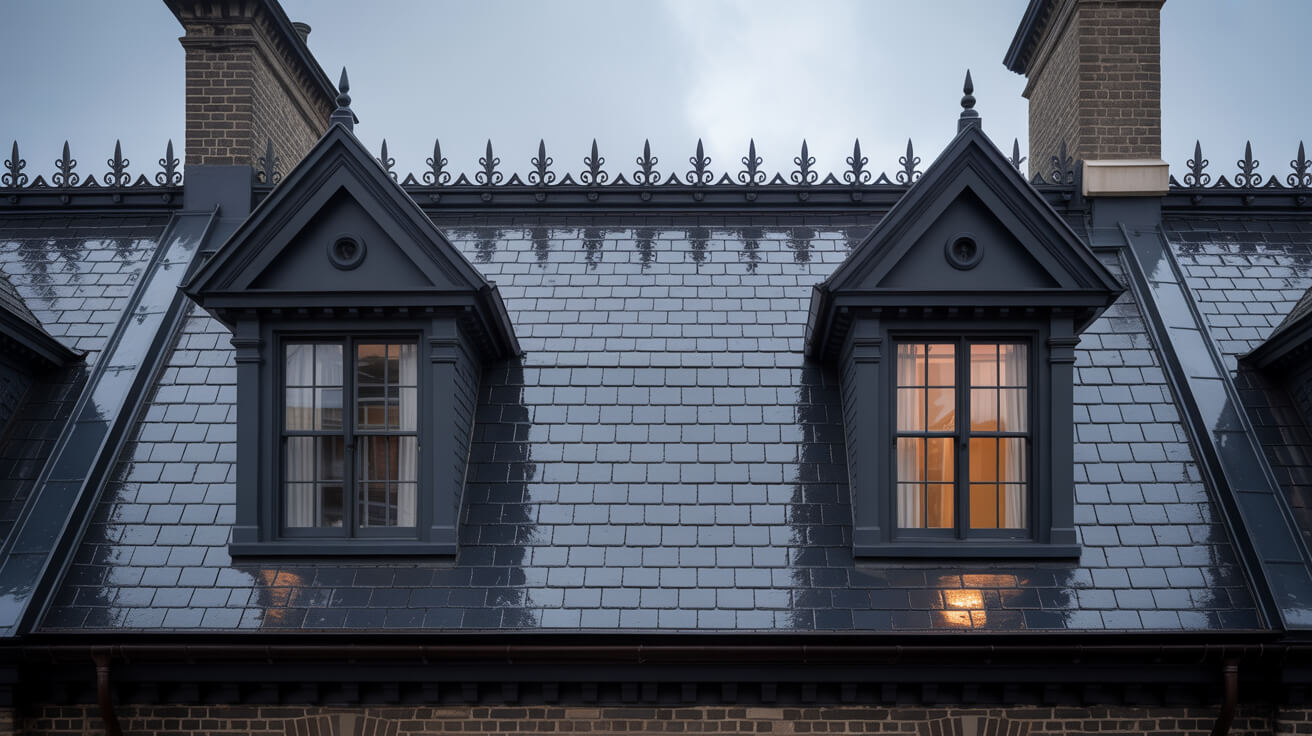
Every project unites skilled workmanship with rigorously tested materials.

With 25 years of experience in lead sheet roofing, James is a trusted expert in heritage roofing, slate, and tiling. His knowledge of traditional methods, paired with modern compliance, makes him a go-to specialist for projects that demand both craftsmanship and durability.
Roofing for Listed & Protected Buildings provides lasting protection, efficiency, and value, delivering durable, compliant roofing solutions that safeguard every type of property investment.
Selecting Roofing for Listed & Protected Buildings involves balancing durability, budget, compliance, and aesthetics to secure the best-fit roofing solution for your property.
Why Clients Choose JG Leadwork and Roofing
With decades of trade experience, our teams understand the unique demands of London and Home Counties roofing. From heritage-listed properties to contemporary extensions, we adapt solutions to local regulations, weather conditions, and architectural styles with precision.
Accredited by Which Trusted Trader, CITB, and approved by Kemper, Westwood, IKO, ALM, and other leading suppliers.
These credentials guarantee safety, compliance, and access to manufacturer-backed warranties, giving clients peace of mind that their project meets the highest professional standards and benefits from warranty protection.
Our heritage projects use Welsh Slate and handmade clay tiles for authenticity, while leadwork is delivered to Lead Sheet Association (LSA) standards. Commercial installations employ Kemper and Westwood liquid systems for durability and efficiency. Each example demonstrates our reliability, blending traditional craftsmanship with modern performance.
Our workforce includes skilled roofers, heritage specialists, and safety-certified installers.
Every roofer holds NVQs, receives ongoing CPD training, and is qualified in both modern flat systems and traditional techniques, including slate and leadwork.
Team structure ensures projects run smoothly—surveyors identify needs, installers deliver with precision, and supervisors oversee compliance. This approach minimises disruption, accelerates timelines, and guarantees consistent quality across residential, commercial, and industrial roofing projects.
Every project is regulation-compliant, warranty-backed, and focused on long-term results.
Client testimonials and case studies confirm our track record, with projects praised for professionalism, durability, and customer support.
We go beyond installation with aftercare packages, maintenance support, and open communication at every stage. Property owners gain reassurance that JG Leadwork and Roofing stands behind its work. Book a free survey today and discover why homeowners, landlords, and businesses trust us with their roofing.
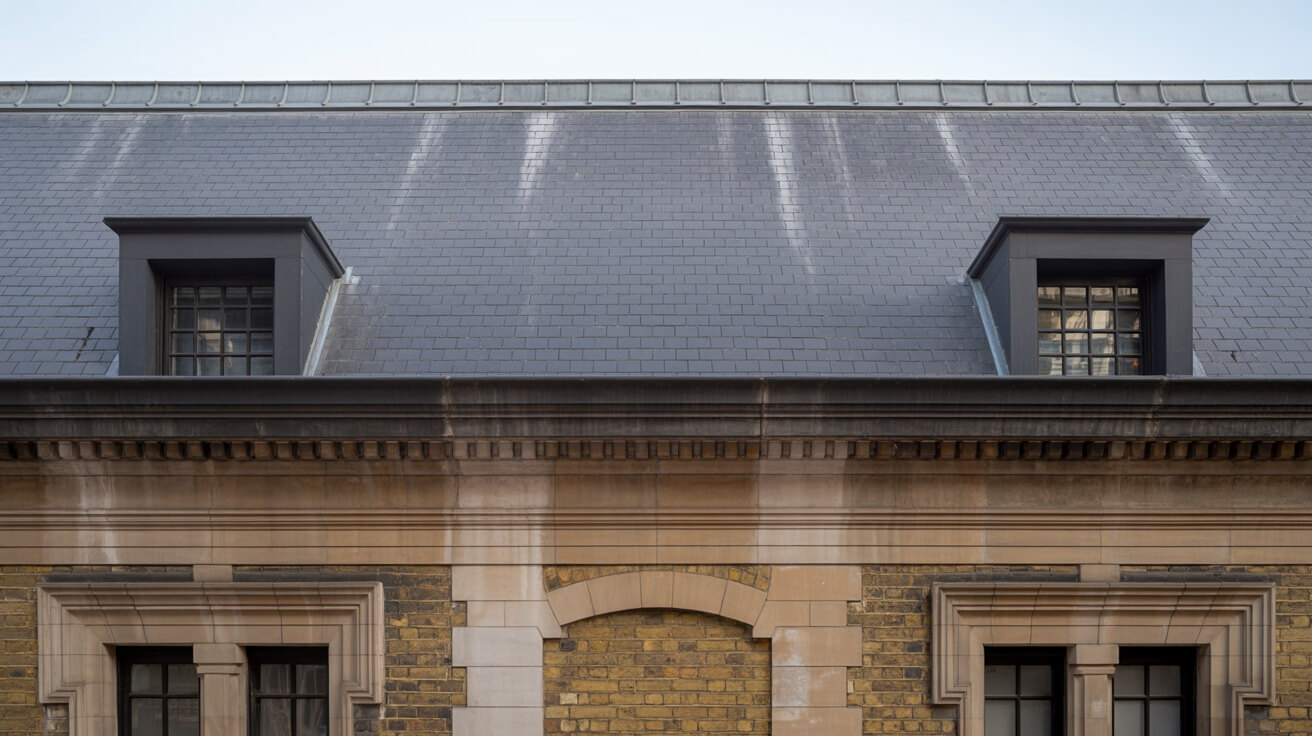
Get a free quote, rapid response, and expert service across London and the Home Counties. Contacting JG Leadwork and Roofing is your simple first step to dependable roofing solutions.
We source materials from leading suppliers including Supreme and IKO felt systems, Kemper, Westwood and Proteus liquid systems, Welsh Slate, handmade clay tiles, ALM Lead Mills, and Nicholson Air Track. These trusted brands guarantee durability, compliance, and warranty-backed performance across flat, pitched, heritage, and commercial roofing projects.
.
.
For homes, Roofing for Listed & Protected Buildings safeguards comfort and enhances kerb appeal with durable, energy-efficient systems. Whether modern extensions or traditional pitched roofs, tailored solutions improve living standards and protect property value.
For businesses, Roofing for Listed & Protected Buildings delivers cost-effective, large-scale installations with minimal disruption. Projects are planned around operations, with safety compliance, energy performance, and flexible scheduling built in—supporting offices, retail, schools, and industrial facilities with reliable, regulation-ready outcomes.
For heritage properties, Roofing for Listed & Protected Buildings combines authentic materials such as Welsh slate, handmade clay tiles, and ALM lead with skilled conservation techniques. Listed building consent and conservation requirements are fully managed, ensuring traditional character is preserved while integrating modern weatherproofing. This careful balance provides long-term durability without compromising historic integrity or aesthetic value.
JG Leadwork and Roofing delivers Roofing for Listed & Protected Buildings across housing, commercial, heritage, and public sectors. Every industry comes with unique requirements, from safety and compliance to efficiency and conservation. Our adaptability ensures projects are delivered with precision and professionalism—whether safeguarding homes, supporting business continuity, preserving history, or protecting critical public and healthcare facilities.
Durable roofing installed with minimal disruption, ensuring safe, regulation-compliant workspaces for staff and visitors.
High-standard, compliance-focused solutions protect community facilities while meeting strict safety and regulatory obligations.
Heavy-duty roofing tailored for wide spans, ventilation, and long-term maintenance efficiency.
Authentic materials and sensitive methods preserve historic character while adding modern protection.
Weatherproof systems that enhance kerb appeal and guarantee uninterrupted trading for outlets.
Tailored roofing improves guest comfort, safety, and ambience across hotels, restaurants, and venues.
Safe, durable systems designed for schools and universities with minimal learning disruption.
Specialist roofing solutions built for hygiene, safety, and regulatory compliance in medical environments.
Our team of NVQ-qualified roofers, LSTA-trained specialists, and health & safety-compliant professionals bring decades of combined experience. Every project is delivered with meticulous attention to detail, ensuring safe practices and consistent quality across flat, pitched, heritage, and commercial roofing disciplines.
Expertise includes heritage leadwork, slate and tile roofing, modern flat systems, and drone-assisted roof surveys. Ongoing CPD training ensures adaptability to both traditional craftsmanship and the latest innovations—giving clients confidence that every roof is built or repaired with proven skill and care.
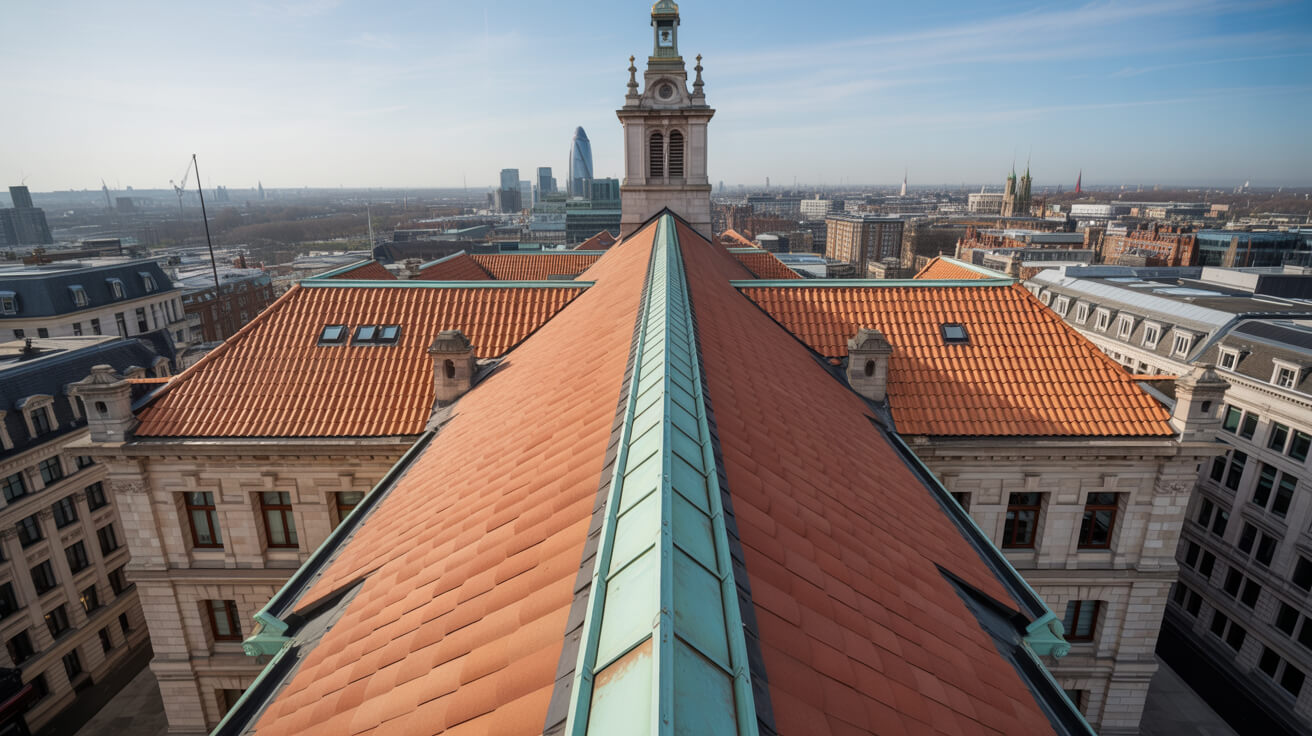
A thorough survey highlights existing issues, structural considerations, and upgrade opportunities, ensuring the best-fit solution is identified from the very beginning.
Transparent, itemised quotes detail costs, timelines, and materials—giving you complete clarity and confidence before work starts, with no hidden surprises.
Scaffolding, access solutions, and robust safety measures are put in place to safeguard both property and people throughout the project.
Skilled roofers complete the work using accredited materials and proven techniques, delivering durable, compliant results while keeping disruption to a minimum—whether for repairs, replacements, or new installations.
Each stage is inspected against manufacturer standards and Building Regulations, with photographic documentation provided for transparency and peace of mind.
Each stage is inspected against manufacturer standards and Building Regulations, with photographic documentation provided for transparency and peace of mind.
In a competitive roofing market, many providers look the same on paper. JG Leadwork and Roofing stands out through proven expertise, accredited methods, and specialist techniques. Our combination of traditional craftsmanship and modern technology makes us the safer, smarter choice across residential, commercial, industrial, and heritage projects.
In a competitive roofing market, many providers look the same on paper. JG Leadwork and Roofing stands out through proven expertise, accredited methods, and specialist techniques. Our combination of traditional craftsmanship and modern technology makes us the safer, smarter choice across residential, commercial, industrial, and heritage projects.
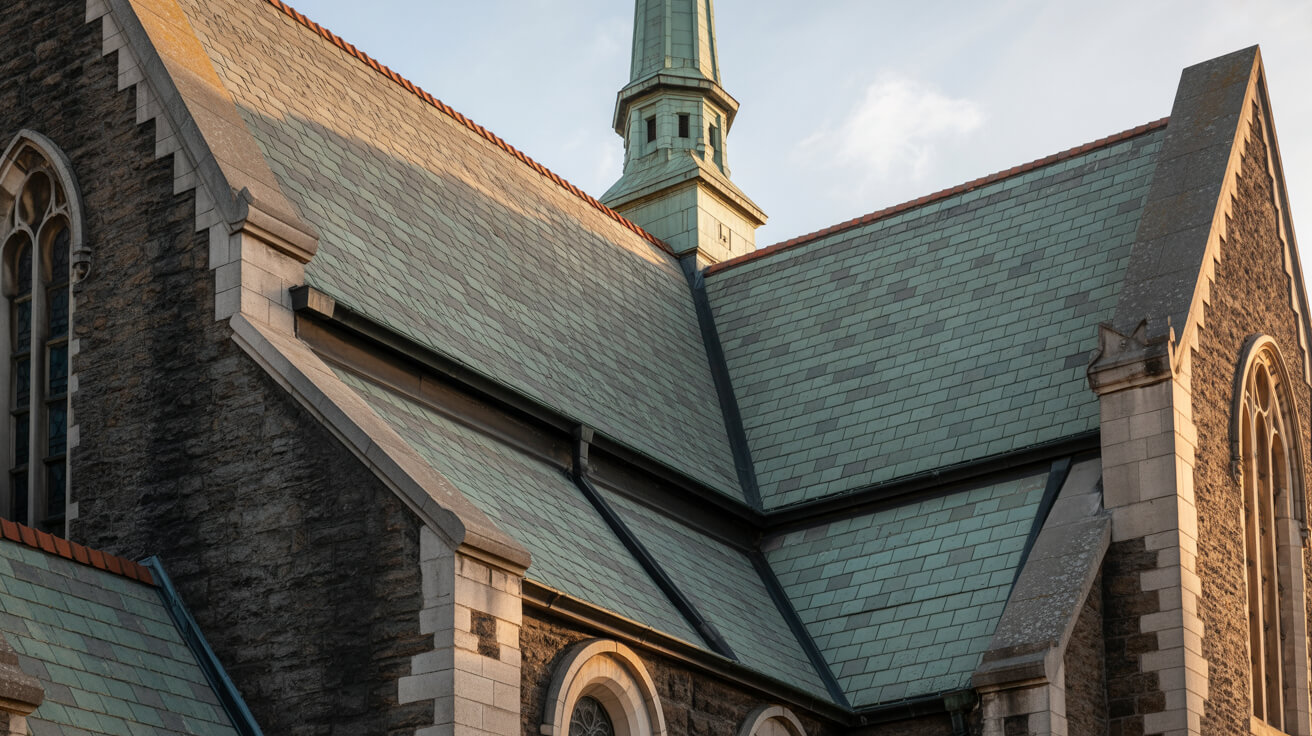

At JG Leadwork and Roofing, every project follows a structured QA process. Each stage—materials, installation, safety, and final sign-off—is measured against manufacturer specifications and UK Building Regulations to ensure durability, compliance, and warranty-backed performance across all roofing services.
Projects are only signed off once all QA checks are complete, giving clients confidence in long-term performance, structural safety, and insurance-backed peace of mind.
Every Roofing for Listed & Protected Buildings project by JG Leadwork and Roofing is delivered in strict alignment with UK Building Regulations and recognised frameworks. This ensures structural safety, energy efficiency, durability, and protects warranties and insurance coverage across residential, commercial, industrial, and heritage properties.
Clients can be confident their project is completed legally, safely, and insurance-ready—delivering long-term performance, compliance assurance, and complete peace of mind.
Property owners often wonder about Roofing for Listed & Protected Buildings—from costs and timescales to permissions. Below, you’ll find straightforward, trustworthy answers to the most frequent and practical queries.
Roof leaks during or after heavy rain are a common—and frustrating—problem for owners of listed and protected buildings. Even subtle issues in heritage or modern roof systems can allow water ingress, leading to damp, timber decay, insulation failure, mould growth, and expensive interior or structural repairs. Understanding the root causes is essential for prevention and for making the right maintenance decisions. Below is a structured breakdown of the main technical mechanisms behind rain-induced roof leaks, with clear pointers for what to look out for and how they relate to UK building practice.
A primary culprit for leaks is the natural breakdown of roofing membranes and coverings over time. On heritage roofs, traditional materials like fore-and-aft laid slate or clay tiles can lose weatherproofing through the slow erosion of fixings and laps. Modern membranes (including bituminous felt and single-ply systems) may lose flexibility, develop fissures, or suffer UV damage after 20–35 years, especially if underlay layers are missing or have become brittle.
These failures allow water to penetrate beneath the visible surface. Capillary action—the ability of water to move into tiny gaps—lets moisture track under slates, into laps, and even upwards against gravity. In practice, this results in localised damp patches, ceiling staining, and, over time, softening or rot in supporting timbers. On older roofs, one slipped slate or missing tile can open a direct path for water, making even a minor defect critical.
If left unresolved, “chronic wetting” of hidden layers accelerates decay, invites woodworm and fungi, and can undermine the structural integrity of the roof. Annual inspection of visible coverings, checking for gaps, slipped elements, and general surface weathering, is vital—especially after severe UK weather cycles with freeze–thaw and driving rain.
Leadwork, zinc, or proprietary flashings (especially around chimneys, abutments, and parapet walls) are a common root cause of leaks after rain. Lead can fatigue and split where it bridges joints (“step” and “apron” flashings most vulnerable), while gaps at the mortar chase or edge lifts break the waterproof seal. For flat roofs, upstand details at rooflights, wall junctions, or pipes are frequent leak points if seals degrade or are poorly installed.
Typical symptoms include damp or brown stains running vertically on ceilings or down chimney breasts, efflorescence (white mineral deposits) on interior walls, or a musty odour—especially after heavy rain. Because rain is wind-driven in the UK, side- or end-lap defects may only manifest under certain weather directions, making leaks intermittent and harder to trace.
Missed or substandard detailing—such as inadequate upstands, insufficient cover flashings, or improper sealant use—fails under pooling or wind-driven rain, especially on roofs exposed to wind uplift. Quick spot-checks should look for vegetation or debris trapped at flashings, mortar creaks, or visible splits in metal.
External and internal environmental factors often turn minor faults into major leaks. Ponding—where water stands more than 5mm deep for over 48 hours—occurs if flat roofs lack the minimum fall (1:80 as per BS6229), or if rainwater outlets are blocked by moss, leaves, or historic gutter design.
At the same time, insufficient insulation or poor ventilation leads to interstitial condensation: moist air from the building condenses within cold roof voids, mimicking rain leaks. According to UK Part L, proper insulation and continuous vapour barriers are required to avoid this risk. Condensation typically shows as dark patches, drips from internal fixings, or “sweating” timbers, particularly in the months following cold snaps when heat loss is worst.
Furthermore, the UK’s climate of repeated freeze–thaw cycles causes microcracks to widen in roof tiles, masonry, and lead, allowing episodic moisture ingress and accelerating long-term degradation.
Reliable diagnosis depends on careful, methodical inspection. Visual surveys—using binoculars from ground level or safe access towers—should be routine at least once a year, post-winter and after major storms. Flat roofs benefit from core sampling (removing a small plug to check layers for wetness and decay) or the use of a moisture metre on internal ceilings.
Drones now play a key role on hard-to-access heritage sites, providing high-resolution imagery of valleys, chimney flashings, and guttering. Where leaks are suspected but not visible, a borescope (small camera probe) can check voids for dampness or biological growth without major disruption.
| Root Cause | Symptom | Risk if Ignored | Indicative Remedy |
|---|---|---|---|
| Membrane/felt decay | Damp patch, ceiling stain | Rot, interior damage | Membrane/covering renewal |
| Cracked/missing tile | Drip after rain | Timbers, ongoing leaks | Replace tile/slate, refix securely |
| Failed flashing | Damp on chimney/wall | Masonry decay, water ingress | Leadwork repair/replace, repoint |
| Poor drainage/ponding | Pooling, moss, blisters | Accelerated breakdown, leaks | Improve outlets, re-slope, clear |
| Inadequate insulation | Drips after cold snap | Mould, timber rot | Insulate, vapour barrier, ventilate |
Upgrading or replacing a roof on a listed or protected building almost always involves using heritage-appropriate materials, but many property owners are surprised at just how much these can impact the final cost. Heritage materials—such as Welsh slate, handmade clay tiles, or traditional lead—are usually more expensive than standard products, due both to the cost of raw materials and the skilled labour required for authentic installation. This matters because, under UK building and conservation rules, the wrong choice can quickly result in refusal of planning permission, failed inspections, or costly remedial work.
For property developers, managers, and heritage homeowners, understanding the specific cost drivers of heritage roofing is essential for realistic budgeting and compliance. Below is a breakdown of the critical factors.
The single biggest difference between a standard and heritage roof is the price and sourcing of materials. Original or like-for-like replacements—required for most Grade I and II listed properties—usually cost significantly more than modern alternatives. Welsh slate is often specified due to its historical accuracy and durability, but it commands a premium, sometimes exceeding £100 per square metre for materials alone. Handmade clay tiles, necessary for many Victorian or earlier dwellings, can also cost two to three times more than mass-produced tiles, in part because they’re often made to historic dimensions or finishes. Lead sheet for flashing or valleys, specified under BS 5534 (the British Standard for slating and tiling), must be of the correct code and installed by trained operatives, increasing both material and labour costs. Additionally, sourcing reclaimed or specialist materials may involve extra lead times and shipping fees, further affecting budgets.
Not only do heritage materials require more investment, but they also demand higher skill levels for compliant installation. Labour costs for heritage roofing can account for up to 60% of the total project—well above a typical modern roof—because conservation projects demand craftsmen versed in traditional methods and up to date with UK Building Regulations Part L (energy performance) and Part C (moisture resistance). Where ornate detailing, complex roof shapes, or listed status are in play, expect longer project durations, scaffolding, and potential involvement of conservation officers or heritage architects. Under planning permission rules, much of this work will require sign-off and documentation, adding further time and professional fees.
Location dramatically affects cost. In London and other heritage-heavy urban centres, prices are higher—not just for labour but due to site restrictions, parking, waste removal, and scaffold security. Conservation area rules can also specify exact materials and demand further permission stages, particularly if any existing structure is being altered or extended. In sensitive districts, planning committees may require that even the underlay and insulation match non-intrusive, breathable standards, further raising supply costs. Exposure to weather is another consideration: heritage properties on corners, hillsides, or open sites may need enhanced fixing systems or additional weatherproofing, all of which add to the bill.
It’s not unusual for a heritage roof using authentic materials to cost 30–100% more than a comparable modern roof. For clarity, here’s a high-level comparison of typical material costs per square metre (excluding scaffolding or VAT) as a starting reference:
| Roofing Material | Price per m² (materials only) | Heritage Status Requirement |
|---|---|---|
| Standard concrete tile | £15–£25 | Rarely permitted |
| Welsh slate (new) | £75–£110 | Often required for listed status |
| Reclaimed slate | £45–£80 | Preferred for strict restoration |
| Handmade clay tile | £45–£70 | Common on Victorian/Georgian |
| Code 5 lead flashing | £25–£35 (plus installation) | Required for historical detailing |
Key drivers to increase in heritage costs:
Heritage materials increase costs markedly, not just because of price tags, but due to the specialised installation, compliance, and oversight they require for legally-protected properties. For accurate budgeting, always consult with a conservation specialist and allow ample contingency for both material complexity and legal process.
Roof installation on a listed or protected building in the UK is typically a longer, more involved process than standard domestic roofing. Most projects range from about one week for a very small structure to several months for larger or complex historic properties. The timeline reflects factors such as conservation regulations, property size, roof shape, material sourcing, and the need to preserve original features. For owners, landlords, facilities managers or heritage custodians, realistic planning is essential to minimise disruption and ensure that the building is safeguarded against weather and decay while maintaining compliance with heritage standards.
The duration of a heritage or listed roofing project depends on specific site and scope details, but the following ranges are typical:
Every project normally begins with a structural and condition survey, followed by a methodical removal of old materials (sometimes recording or storing them for reuse). Repair to underlying timbers, treatment for hidden decay, and careful installation of reclaimed or conservation-grade materials are carried out under local authority oversight. If the roof requires traditional leadwork or hand-finished details, expect several days added for each section. Cancellation or redesigns imposed by conservation officers can also introduce pauses.
The project’s length is influenced not only by building regulations, but by practical factors on the ground:
Preventative maintenance is crucial for older roofs, as minor faults rapidly grow into costly repairs if missed. Recommended practice in the UK:
Delaying these jobs usually leads to water penetration, faster timber decay, and loss of authentic features—all of which may necessitate major works under heritage regulations.
The longevity and maintenance requirements vary by material, with heritage roofs typically prioritising authenticity and endurance:
| Material | Typical Lifespan | Inspection Frequency | Maintenance Needs |
|---|---|---|---|
| Slate | 80–100 years | Every 5 years | Minimal—replace broken/slipped slates |
| Hand-made clay tiles | 50–75 years | Every 3 years | Renew cracked tiles, check pointing |
| Lead sheet | 70–100+ years | Every 10 years | Inspect joints, reshape as needed |
| Mastic felt (flat) | 10–20 years | Every 2 years | Patch repairs, edge reseal |
| Liquid membrane (flat) | 25–40 years | Every 3 years | Check seams, schedule recoating |
Regular inspection and targeted upkeep is the best guarantee against major, disruptive repairs, ensuring historic buildings remain structurally sound for decades to come.
When deciding between repair and replacement for a listed or protected building’s roof, your financial outcome, long-term property value, and regulatory compliance all hinge on getting accurate cost forecasts and robust assurances. For heritage properties, the stakes are even higher: unexpected expenses and poorly executed work can damage irreplaceable features, jeopardise resale value, and risk non-compliance. Understanding the cost structure, the role of warranties, and the importance of accredited installers helps homeowners, landlords, and asset managers secure lasting protection—without nasty surprises.
What you pay for roofing on a listed or protected building depends on several interlocking factors—each with a direct impact on total spend. Here’s a breakdown of the core pricing variables:
| Service Type | Typical Range (UK) | Key Influences |
|---|---|---|
| Roof Repair | £250 – £1,200 | Damage type, access, materials |
| Roof Replacement | £5,000 – £15,000+ | Size, structure, insulation, finish |
A reputable heritage roofing project will always supply an insurance-backed warranty—typically covering 10 to 20 years. This warranty usually protects you against:
For homebuyers and commercial landlords, documentation of a valid insurance-backed warranty is now routine due diligence—failure to provide one may block mortgage approvals or insurance cover. Most warranties are transferrable, aiding resale, and demonstrate Part L compliance (energy efficiency), which is increasingly required to meet insurance and regulatory standards. Without these guarantees, owners risk uninsured losses from latent defects years after the project is completed.
The quality (and insurability) of heritage roof work isn’t just about materials—it’s about who’s doing the work. An accredited installer with certifications such as NVQs in Roofing Occupations, CITB/CSCS carding, and membership in schemes like Which Trusted Trader is critical to a reliable outcome.
Key reasons to prioritise accreditation:
Tempted by a low quote that promises to “just patch over the old roof”? Heritage properties are especially vulnerable to corner-cutting, which can result in:
False economies rarely stay hidden: the upfront “saving” is almost always eclipsed by higher repair bills, insurance excesses and, at worst, irreparable damage to the property’s historical fabric and future resale prospects.